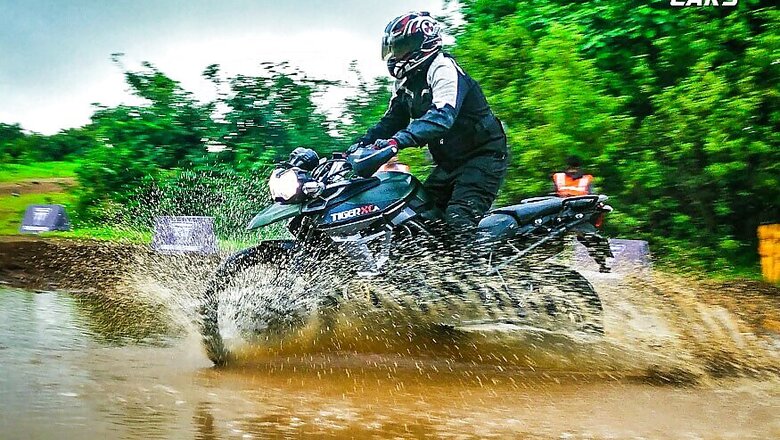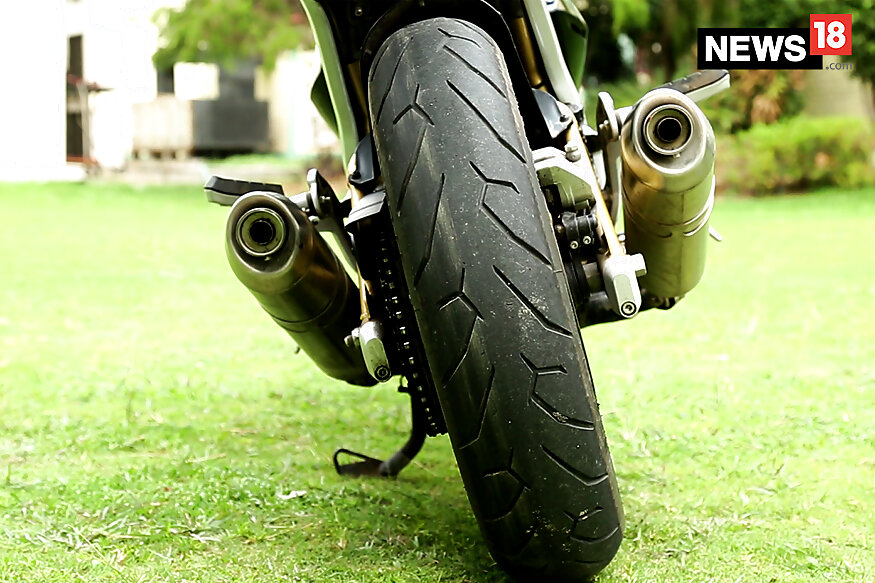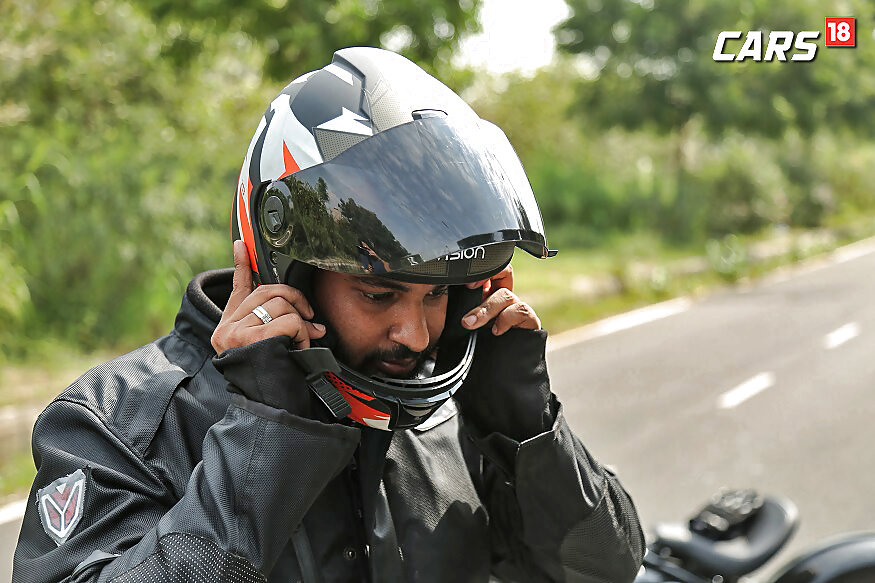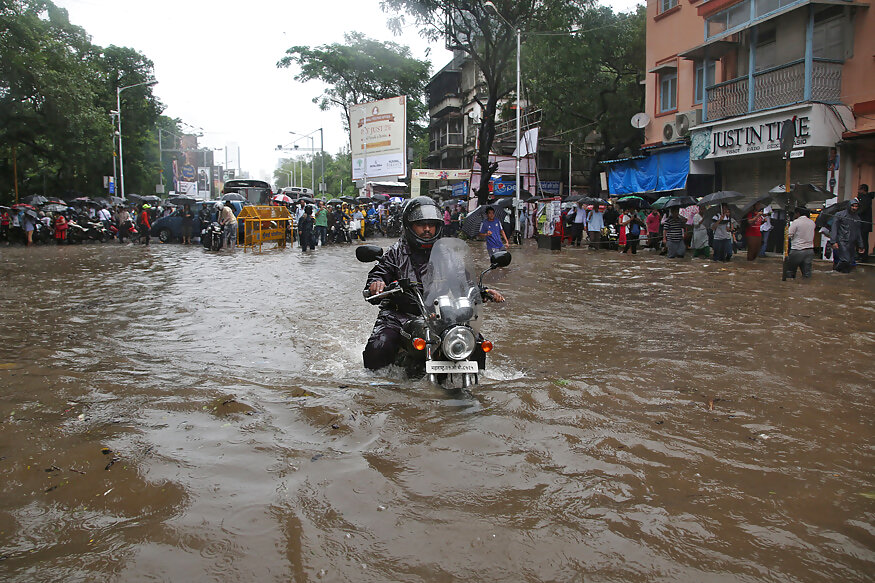
views
The rainy season is here! While that may sound delightful to a lot of people, it is often a matter of concern for us motorcyclists as we have to face the elements in almost every weather condition – be it the scorching heat in the summer, the shivering cold in the winters or when it rains in the rainy season. The difference is that the first two weather conditions do not make it as tricky to ride on roads as compared to riding during rains. That's because rain affects the rider in many ways. But what if you have to hit the roads while it is pouring outside?
Well, in that case, there are things that you can keep in mind, and things that you can do in advance, that will make it easier for you to ride in such conditions. We list some of them down for you. Now keep in mind that India is a country with many kinds of roads and traffic conditions. So make sure you understand the essence of these practices and if required, alter them to suit your scenario better.
Right, with that out of the way, let's get to it.
How to Take Care of Your Car in Monsoon – DIY Guide!
1. Tyres are your best friend
I know, talking about tyres may not be the sexiest part of motorcycling for many but it is definitely one of the most important. It is what connects you, on the motorcycle, to the road beneath it. And if the connection - or the contact patch as the enlightened call it - is weak, then that's not good for you. There is a reason why tyres on an ADV motorcycle that goes off-road has different tread and pattern as compared to sports motorcycle that is meant to do rounds on a race track – because different tyres can make all the difference. Similarly, there are tyres which are better equipped to handle wet riding conditions better. Now India does not have year-long rainy weather like some parts of the world so you might not need to have an all-out rain tyre on your motorcycle. What you can opt for, instead, is a tyre that can do a bit of both dry and wet weather riding, at least. And in case you can go for a proper rain tyre, then go for it. Swap it when the season kicks in, it doesn't take that long.
But before you go on a shopping spree, it is best to look up different kinds of treads and patterns on a tyre and understand the difference it makes and choose the best one for you.

2. Invest in riding gear
The motorcycle is only as good as its rider, and the rider will be better off being dry. It doesn't matter how capable your motorcycle is in the rain if you are not, and the best way to ensure that you are not suffering is to invest in some riding gear. While riding gear is an absolute necessity in any kind of a weather condition, it is important to have the right kind of gear when the need arises. This is because when you get soaked, not only does everything feel heavier, the wind will also make you feel cold. And when you are feeling cold, the response time goes down which is not safe.
When it rains, you need to have a riding gear that can disperse water and keep you dry. While there are several mesh riding gears that claim to be “fully waterproof” it is unlikely that they will hold on to that claim when it rains for long. The best way is to invest in proper rain gear but if that is turning out to be too expensive, you can go old school and keep a set of rain suit handy. There are several options available in the market which are built purposely to be worn over your existing riding gear and they provide excellent rain protection as well. They are not breathable and they certainly don't look cool, but they get the job done and that is what's important.
From my personal experience, it is best to keep a set each where you travel the most, which in my case is office and home. So that I don't need to carry one on me all the time and when the forecast suggests I keep one handy, then I have on nearby to take along. Otherwise, if you have a motorcycle with panniers, then that is the place where you should keep them throughout.

3. Give it a break
Before the rains come, there is usually a build-up of oil and road grime which, at the start of the rain, can make for a slippery surface. At this moment, the roads are at their slippy best as oil and water don't mix. So when it starts to rain, it is best to give it a break. Go to a nearby coffee shop or something, grab a snack and enjoy the rain, watch your motorcycle and fall in love with it all over again. Nothing wrong that.
4. Spot the Spot
Even after it has rained for a while, it does not wash away the oil from the road completely as there might be a few spots on the road which has standing water collected. The obvious tell-tale is the rainbow-like reflection and if you see that, avoid it. In case you notice it with just about enough time to avoid it, be sure to not to do any sudden or jerky movements on the bike as that can throw you off-balance. In case you are too late, then don't panic as that may end up in you locking up the brakes. Just ride across the puddle in the steadiest, calmest and in an upright manner. If you are on the throttle, then keep it steady as you don't want to do have excessive wheel spin due to erratic throttle input.
Keep an eye out for manhole covers, bridge expansion joints and painted road markings as they tend to get slippy too.

5. Get schooled
Yes, we are asking you to go back to school but of a different kind. There are several riding schools which now conduct sessions often across the country and what you need to be on a lookout for is an academy that also includes off-road training. The reason why you should attend one of these is that you get to learn about how you handle yourself and the bike in different terrains that throw up unexpected traction conditions. You also learn about proper body movements and how can one counter the forces pulling you and your bike to the ground. These academies also give you great tips that you can apply during regular riding as well, for example, you should look far up ahead so that you have enough time to anticipate the route you are going to take through the puddle and not be caught off-guard. And who knows, you might actually become good at it and then you stand on the foot pegs and weave through the puddle like a boss.
The only thing to keep in mind is that you shouldn't overdo it too much and stay within your comfort zone.

6. Keep it slow, keep it calm
Make it a ground rule to not ride faster than you can react, especially when it is raining. Increase your following distance to the vehicle in front of you to give you that time and make sure you avoid the sprays coming from them. This is even more suggestive when you are travelling behind a truck as the sprays from their huge tyres can reduce visibility to a great extent. Once you have given enough space to the vehicle in front of you, then you can also look out for the comparatively dry patches of road. Cars and larger vehicles disperse the water on the road leaving dry tyre tracks or in the middle of the road – depending on a number of factors.
And even more importantly, especially in conditions like India where everyone seems to in a hurry, remember to take it slow-er. You may come across all kinds of people on the road who are in a hurry, don't know what they're doing, don't know where the indicator switch is or simply aren't experts when it comes to driving in the rain and giving motorcyclists their space. In any of these scenarios, or even in general, avoid getting into an argument as that is almost always a waste of your energy and time. It's just best to keep calm and ride on.

















Comments
0 comment